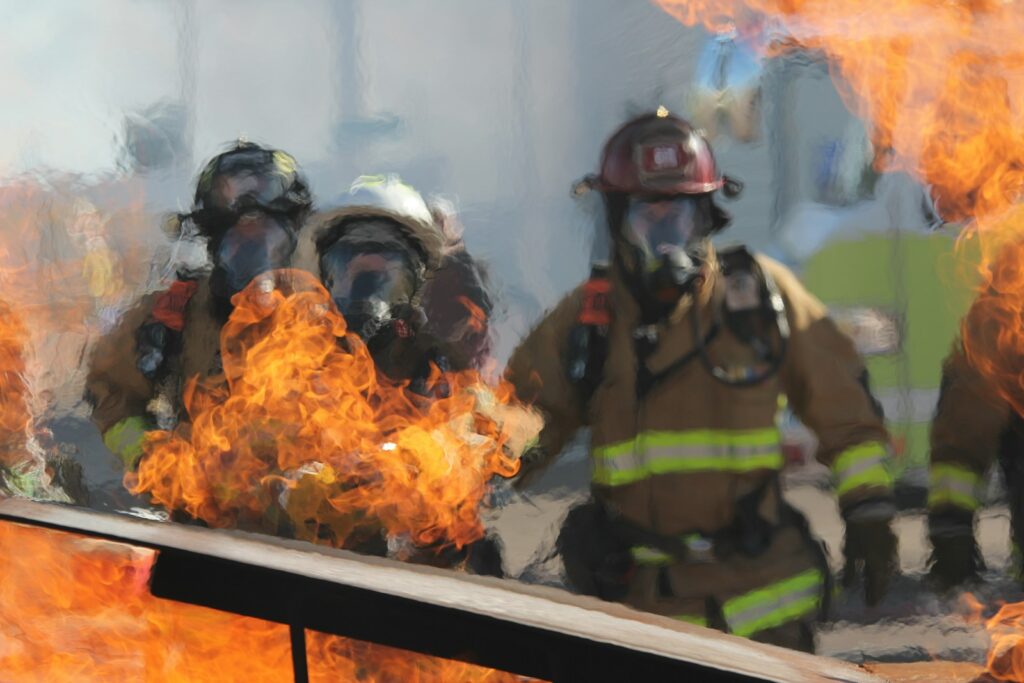There’s no doubt about it – fire hazards are a big concern in both residential and commercial settings, posing risks to property, health, and life. Dangerous materials, if not properly managed, can become potential sources of fire. And we don’t have to explain the repercussions of those to anyone. That’s why it’s so important to have a basic knowledge and understanding of these hazards – it gives you something to rely on. Because believe it or not, a lack of awareness can bring far more dire consequences than a lack of fire extinguisher.
Everyday Items
We may not even know it, but we’re dealing with potentially hazardous materials every day. What are they? To keep things simple – these are materials that, under certain conditions, can ignite and fuel fires. You’ve got your flammable liquids such as gasoline, alcohol, and solvents. These substances can easily vaporise and form explosive mixtures with air. Even a small spark can set off a fire with these materials. Another example is combustible dust. Often overlooked, fine particles from materials such as wood, flour, sugar, and certain metals can become highly explosive when suspended in the air. Industries dealing with these materials know it all too well, which is why they often implement stringent dust control measures – to prevent ignition. But there’s more. Household items, including cleaning agents and aerosol sprays, can also be fire hazards. These products often contain flammable chemicals that can ignite if exposed to heat or flame. Proper storage and usage according to manufacturer guidelines are essential to minimise risks.
Electrical Equipment & Fire Hazards
Electrical equipment and wiring are leading causes of fires, particularly in older buildings where wiring may be outdated or deteriorating. Overloaded circuits, faulty wiring, and malfunctioning appliances can generate heat and sparks, igniting nearby combustible materials. Regular inspection and maintenance of electrical systems are vital to prevent those. In commercial settings, machinery and equipment can pose some serious fire risks if not properly maintained. Overheating motors, friction in moving parts, and static electricity are all potential ignition sources. That’s why regular maintenance and checks should be a part of our safety routine.
Construction
This may sound rather outlandish, but construction materials can also contribute to fire hazards. Starting with the most obvious one – wood. Often used in building structures, it’s highly flammable. While treated wood is more fire-resistant, it can still burn under intense heat. Insulation materials, particularly those made from foam or fibreglass, can ignite and release toxic fumes when burned, making things even worse. Modern construction often incorporates synthetic materials like plastics and composites, which can also be highly flammable. They tend to produce intense fires and emit harmful gases in the process. Building codes and regulations increasingly emphasize the use of fire-resistant materials and construction techniques to enhance safety.
Managing & Mitigating
Now it’s time for the big question – how can we stop it from happening? Is it even possible? Let’s start with the basics. The fact of the matter is, there’s no need to overcomplicate things. To that point, starting with the obvious – these materials have to be used and stored properly. Flammable liquids should be kept in well-ventilated areas away from ignition sources. Safety cabinets and containers can be a big help as they’re designed to contain spills and vapours and reduce the risk of accidental fires. All depends on your needs. In industrial and commercial environments, implementing comprehensive fire safety plans is essential. This includes regular fire drills, employee training, and the installation of fire detection and suppression systems. Sprinkler systems, fire extinguishers, and smoke detectors should be readily available and maintained in working order. And don’t forget about fire extinguisher servicing. You have to make sure your fire defence system is ready for action.
Knowledge is Power
Finally, public awareness and education. These are also key components in managing fire hazards – and for a simple reason. Understanding the potential risks associated with everyday materials and practices can give us just enough knowledge to take preventive measures. Simple actions such as not overloading electrical outlets, storing flammable liquids safely, and maintaining clear escape routes can make all the difference here. A difference between a tragedy and a normal day in the office.
5 Things to Know About Hiring Fire Watch Guards(Opens in a new browser tab)
Staying Ready
Fire hazards are always a risk. And in any environment, but with just enough vigilance and proper management, we can minimize their impact. Identifying dangerous materials and understanding how they can contribute to fires is the first step, and the end goal for us is prevention. With the right proactive measures, we can protect our homes, workplaces, as well as entire communities from the devastating effects of fire.
